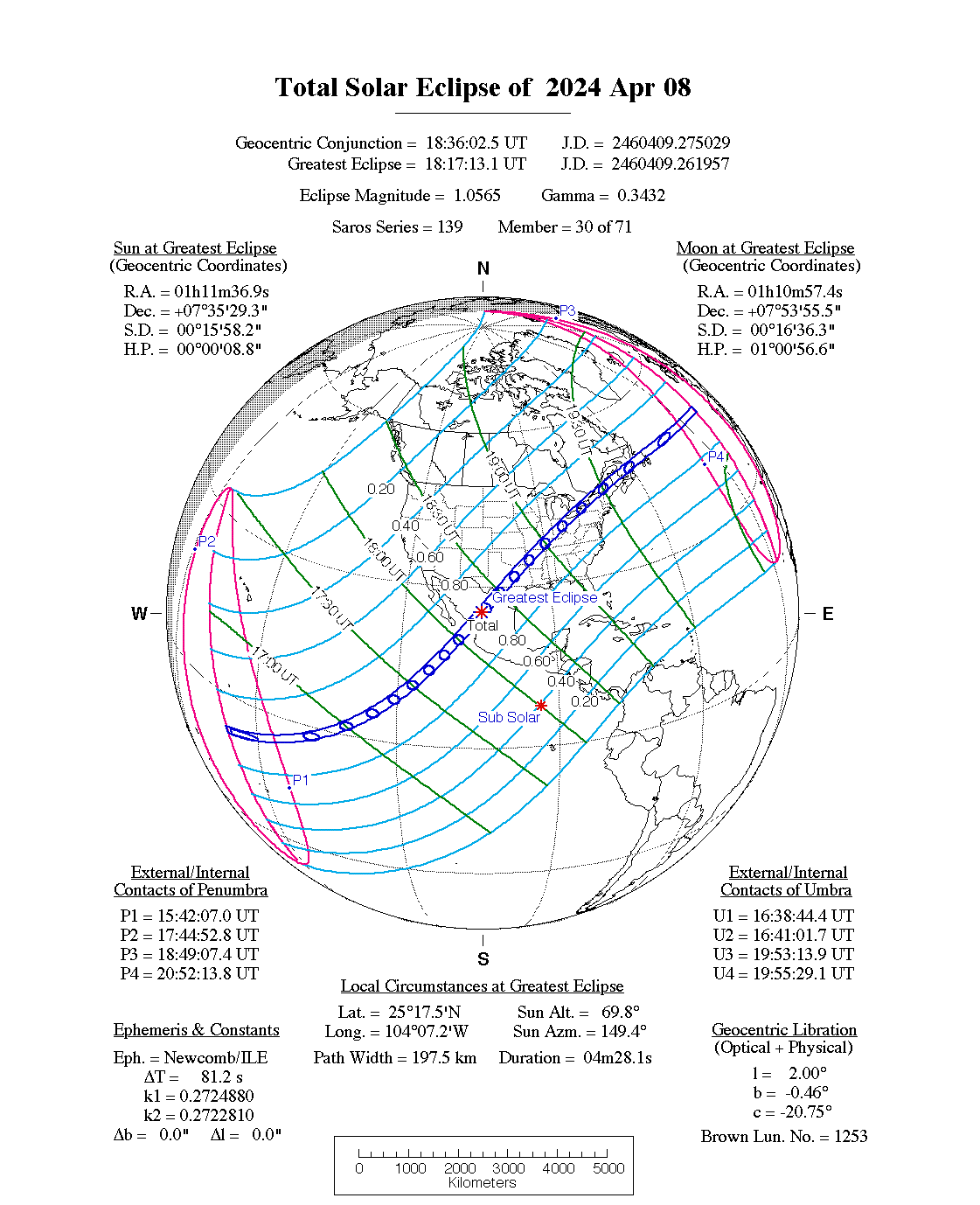Total Solar eclipse April 8, 2024.
The solar eclipse of Monday, April 8, 2024, represents a significant astronomical phenomenon. It is the 15th total eclipse of the 21st century and marks the 18th passage of the Moon's shadow over the Earth since the beginning of this century.
This eclipse will feature a narrow totality zone stretching across North America, starting on the Pacific coast and moving northeastward through Mexico, the United States, and Canada before ending in the Atlantic Ocean.
Remarkably, this eclipse will be the only total one of the 21st century visible from these three North American countries, providing a unique opportunity for study and observation for researchers and astronomy enthusiasts in this region.
The eclipse will consist of five main phases and will last a total of 5 hours and 10 minutes
| ECLIPSE PHASES | LOCAL TIME |
|---|---|
|
Partial eclipse begins: |
16:42 |
|
Annular eclipse begins: |
17:38 |
|
Maximum eclipse: |
19:17 |
|
Annular eclipse ends: |
20:55 |
|
Partial eclipse ends: |
21:52 |

Partial Lunar Eclipse of 2024 Sep 18
On September 18, 2024, a partial lunar eclipse will occur, marking the third eclipse of the year. Once again, this celestial event is favorably positioned for observation in the Western Hemisphere. Taking place at the ascending node of the Moon's orbit in Pisces, the eclipse will coincide with the Moon being 0.4 days before perigee, appearing 31.8' in diameter. This eclipse is characterized by a relatively shallow partial phase, with an umbral eclipse magnitude of 0.0869. At its midpoint, the Moon's northern limb will dip just 3.1' into the umbral shadow.
The timings of the major eclipse phases are as follows:
- Penumbral Eclipse Begins: 00:41:00 UTC
- Partial Eclipse Begins: 02:12:45 UTC
- Greatest Eclipse: 02:44:16 UTC
- Partial Eclipse Ends: 03:16:24 UTC
- Penumbral Eclipse Ends: 04:47:56 UTC
The moment of greatest eclipse (02:44:16 UTC) will coincide with the Moon reaching its zenith for a location in northern Brazil near Sao Luis. This eclipse will be visible from most of North and South America, Europe, and Africa, while none of it will be observable from Asia and Australia.
The September 18 eclipse is the 52nd event in the Saros 118 eclipse series, which encompasses a total of 73 lunar eclipses in the sequence: 9 penumbral, 7 partial, 28 total, 8 partial, and 21 penumbral eclipses. Saros 118 spans 1298.2 years, extending from 1105 to 2403.









